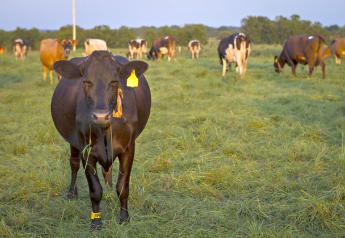Grass Finished Beef Marketing Update

The grass fed beef industry is a growing industry and many producers are searching for information on current market prices. This article will shed some light on sources of information for the grass-fed beef producer.
By: Kable Thurlow, Michigan State University Extension
Due to less information availability in the grass fed beef market, producers have a difficult time gaining access to the going rate for their cattle. Unlike traditional commodity crops, and livestock markets, the grass fed industry is relativity new, and gaining access to the markets is not as easy as checking the Chicago Board of Trade, or your local grain elevator.
According to Allen Williams, a nationally recognized expert in the grassfed beef industry, most grass-fed beef pioneers started out on a small scale, marketing directly to the consumers, very similar to the way that the all-natural grain fed program started. As more producers enter the grass-fed beef sector, the increased competition will force some that have been fairly comfortable with their current methods of marketing, to become more creative. In order to remain competitive, grass fed beef producers will need to ensure that they are producing a high-quality desirable end product. This competition needs to be viewed as an opportunity to strengthen the industry, rather than a thorn in the side of those already considered veterans of the industry.
According to Williams, like most industries, the early adapting pioneers in the grass fed beef industry were on the cutting edge, and not afraid to take risks. Most were smaller producers marketing their beef direct to consumers. Then, as media attention helped to grow consumer interest in grass fed, there became larger entities, and existing branded programs that started adding grass fed beef to their portfolios. Williams states that the all natural grain-fed programs started out as small producers, then moved to larger producers, then branded programs were developed, then existing programs entered the scene, and finally large packers entered the arena. He also believes that the grass fed industry is mimicking the all-natural beef programs and he reasons that this is a telltale sign of maturity in the grass fed sector. This is mainly due to the larger existing programs that are entering the grassfed beef industry.
Industry experts maintain that growth in grassfed beef is very stable and has been between 25-30 percent annually over the past decade. Many experts also predict that this growth will continue as interest from larger companies increases. Where can a producer go to find out current market trends and prices? Truth is, there are limited resources available in terms of market places that are publicly sharing prices received for their grass fed beef products. It really helps to have an expert in the field who you can tap for information, and producers need to make networking within grass fed circles a priority.
The USDAAgricultural Market Service has a market reporting site, however, it is in its infancy stages and should improve as more information enters the market. According to the latest USDA AMS National Grass Fed Beef Report, the price on a dressed weight basis is averaging $312.50/cwt. There are several wholesale buyers currently paying in the $3.10- $3.30 per pound range on a hot carcass weight basis. A survey of Michigan producers participating in a North Central Region Sustainable Agriculture Research & Education grant with Michigan State University Extension has indicated a price range of $2.80 - $5.50 on a hot carcass weight basis for small volume, direct marketed sales.
Sources for grass fed beef markets:
As growth in this industry continues and as larger meat packing companies enter the grass-fed sector, information on grass-fed beef prices will continue to improve. As with growth in any industry, opportunities to participate also follow and the same is true with the grass fed beef industry. As major packers enter the industry, there will be an increased demand for genetics and for finishing capacity. Both of these are major needs and can present an opportunity for those interested in grass fed beef production.
These opportunities do not come without risk and those interested in participating need to make sure that they do their homework before entering the business. Finishing cattle on grass takes a great amount of skill and is not something for the novice to tackle in great quantities. A good grass finisher must be a great forage manager, knowing how to match livestock nutritional needs with ever changing pasture based forages is extremely challenging, but it can be done.
In the meantime, it is important that you link up with other producers, as well as University and Industry representatives that are working in the grass fed sector. These individuals can help you gain access to valuable information that may not currently be at your finger tips.







